While in Europe for a wedding this past May, I was fortunate to sneak in rounds of golf at four excellent golf courses in the Netherlands (Kennemer, Royal Hague, Utretchse 'De Pan' & Swinkelsche) and one in Belgium (Royal Golf Club des Fagnes in Spa). The second stop on my tour was at Royal Hague, set in a spectacular dune setting, it is a wonder we don't hear more about this golf course. The topography at Royal Hague is ideal, presenting golfers with a plethora of stances and lies, and the scenery of the adjacent National Park is wonderfully appropriated throughout the round making one feel like they are in a remote, unpopulated setting, a far cry from reality.
Stand out holes include No. 6, 7, 9, 14, 15 and 16. On the whole, I can't really find a weak link in regards to individual holes, and that is a testament to the overall quality of the course. The design is eminently strategic and a stern test from the way back tees. On the negative side, I felt the fairways could stand to be wider throughout, especially where landing areas were blind and the existence of small winter greens detracted somewhat from the overall presentation (my understanding is that they are barely needed anymore). From a more personal viewpoint, I would like to see greater articulation of the bunker edges to mimic the natural blow-outs that are forming on the property and prefer more internal green contours, however, both are in keeping with Colt's style.
The opening hole is a wonderful introduction to the terrain one will be golfing over for the remainder of the round, with nary a level lie to be had. My host at Royal Hague explained that much effort has been made in the past decade to expose the underlying sand throughout the property and cut back invasive vegetation to return the golf course to its original links appearance.
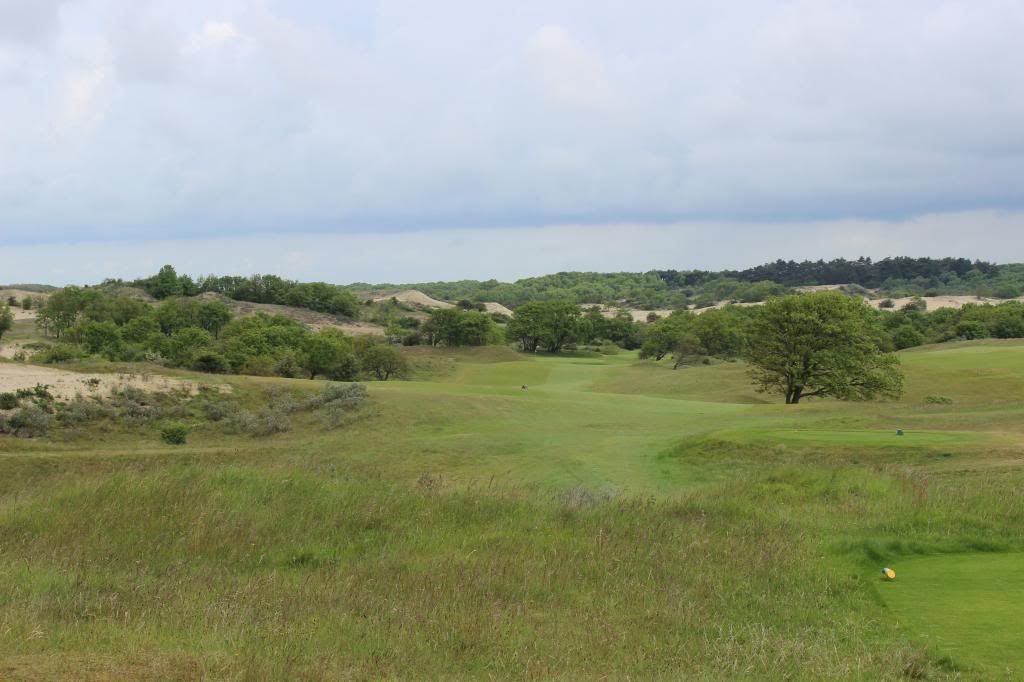
Drives at the second must be shaped to hold the slanted fairway, especially in the strong winds that often frequent the site. Longer drives are rewarded by catching a speed slot, shorting the approach into the elevated green.

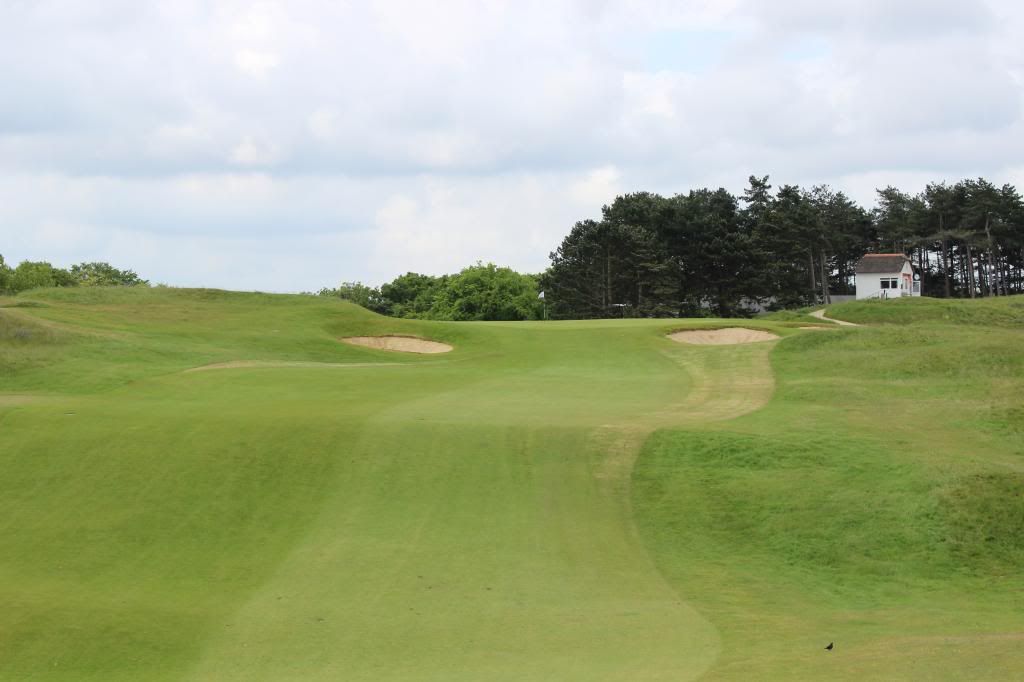
The drive at the dogleg right third hole plays over a deep valley and should favour the left hand side to avoid a blind approach into the green which features a strong back-to-front tilt, false front, and a sharp fall-off to the right.
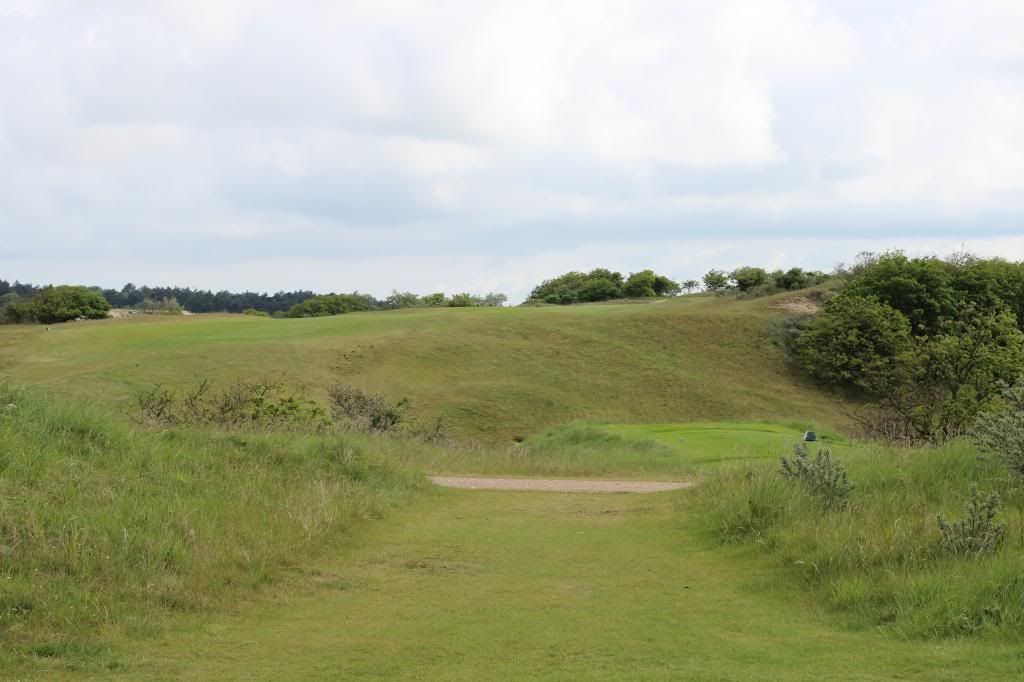
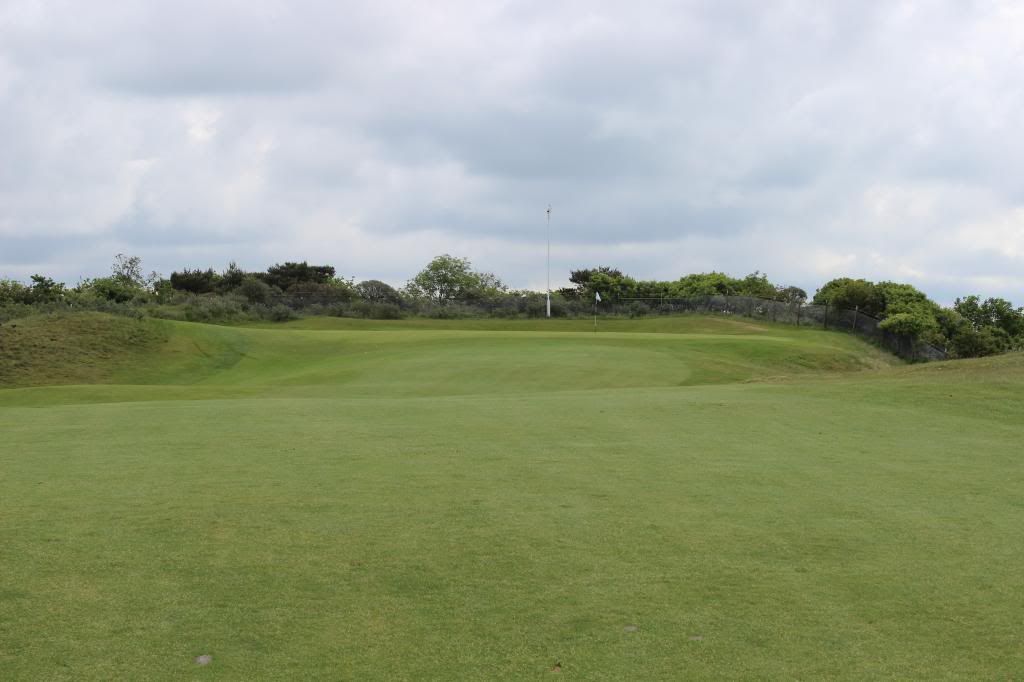
The drop-shot fourth plays well over 200 yards, but ample room is provided between the fronting bunkers and green when trying to keep the ball down under the wind. Meijendel National Park provides a great backdrop for the green site.
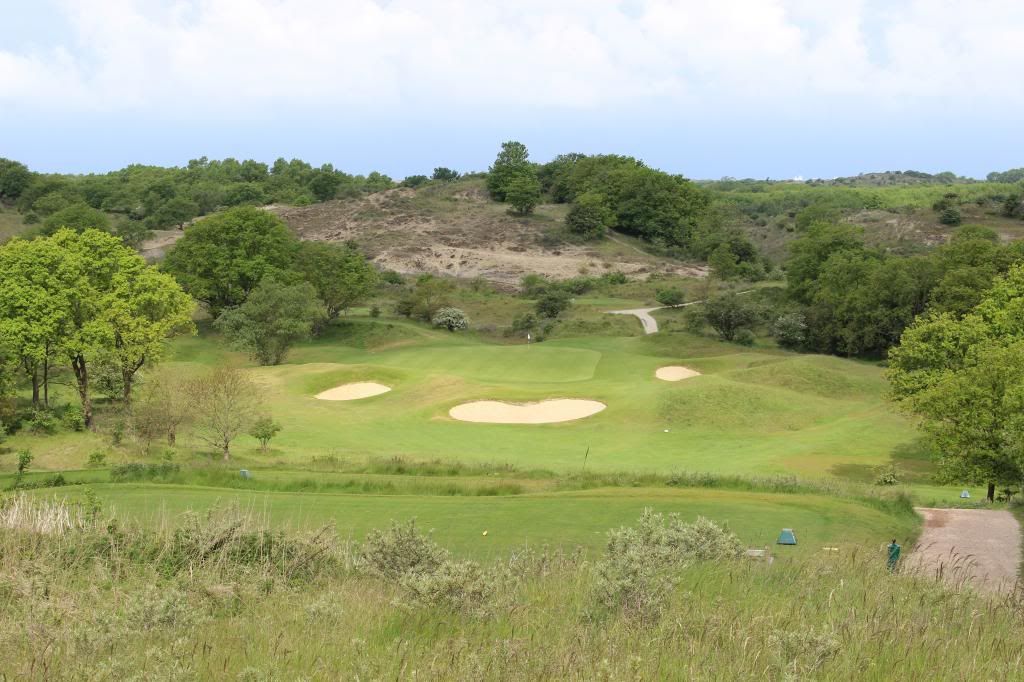
The three-shot fifth plays over more excellent golf country, whose humps and hollows provide enough varied interest and challenge that like every other hole except No. 13, has no fairway bunkers.
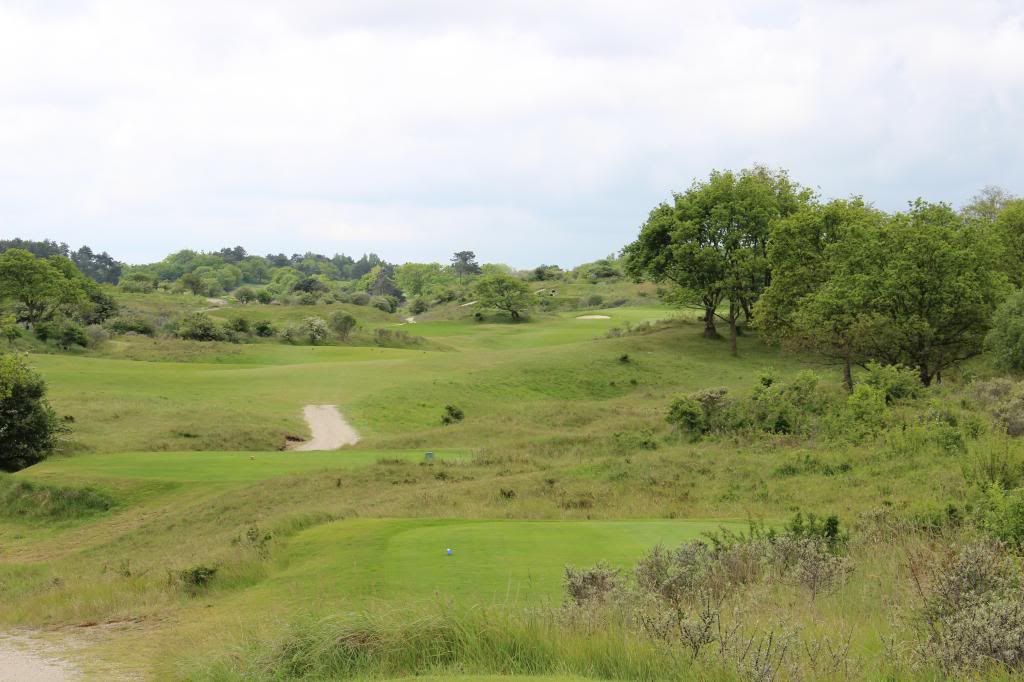
The carry at the all-world sixth is only 170 yards, but looks much more daunting. The fairway is chalk full of interesting lies, and the green is sternly protected by a deep bunker left and deep run-off to the right, making for an intimidating approach into the 468 yard hole.

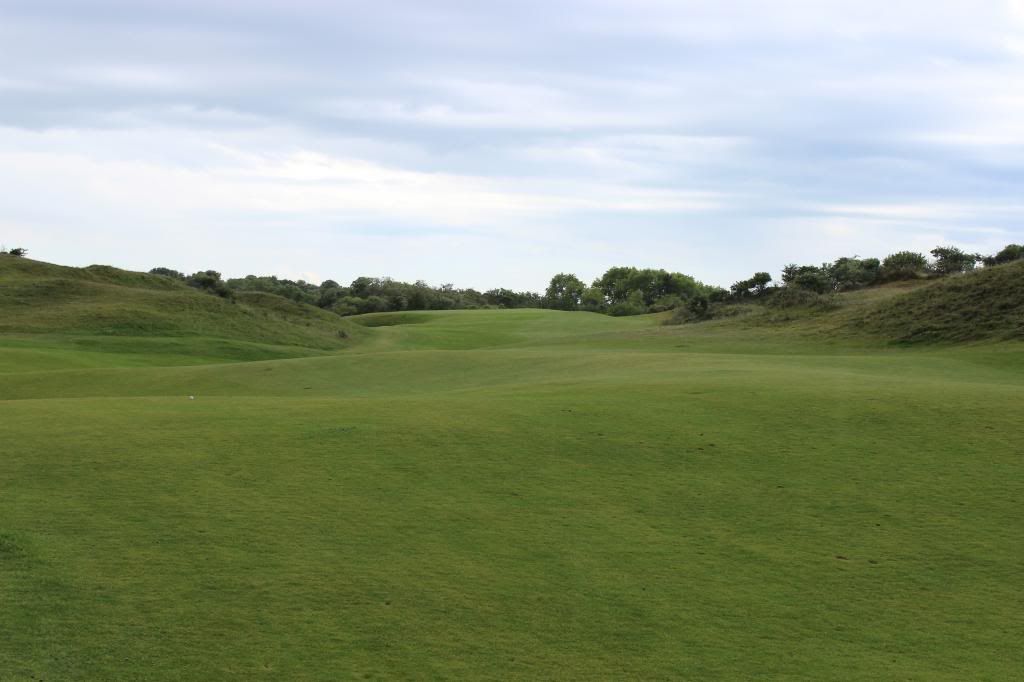
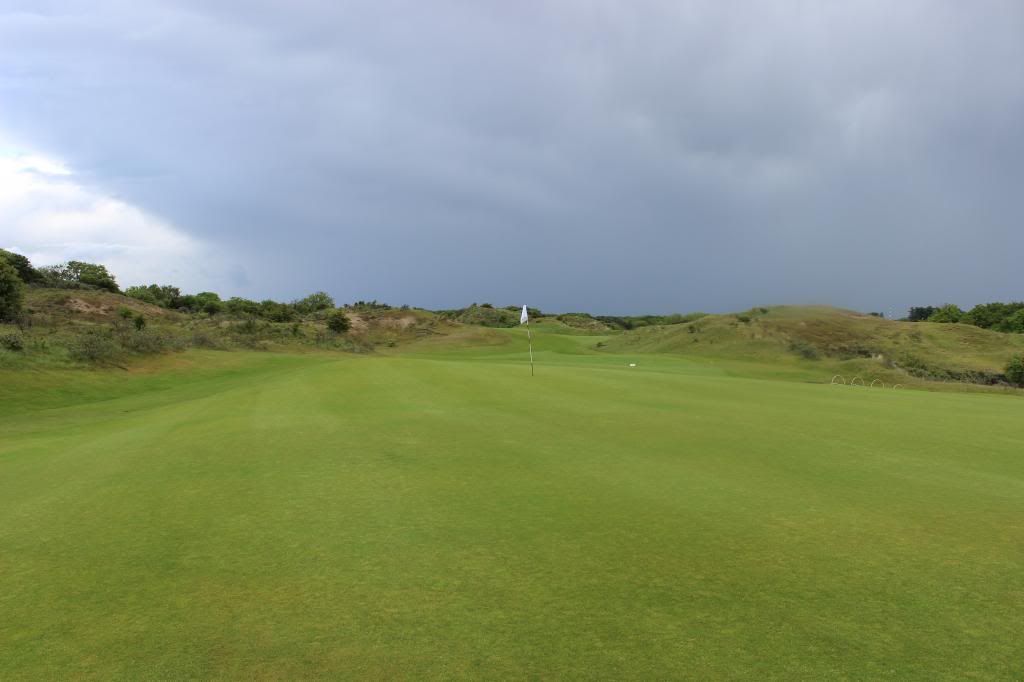
The seventh fairway is completely hidden from the tee with only a distant target pole guiding play, requiring players to trust their swing. Drives taking a more aggressive line are rewarded with a clear view of the green, while drives leaking to the right are faced with an approach over the shoulder of a dune. Note the lovely little blow-out bunker on top of the dune on the approach - a feature I would like to have seen more of throughout the round.
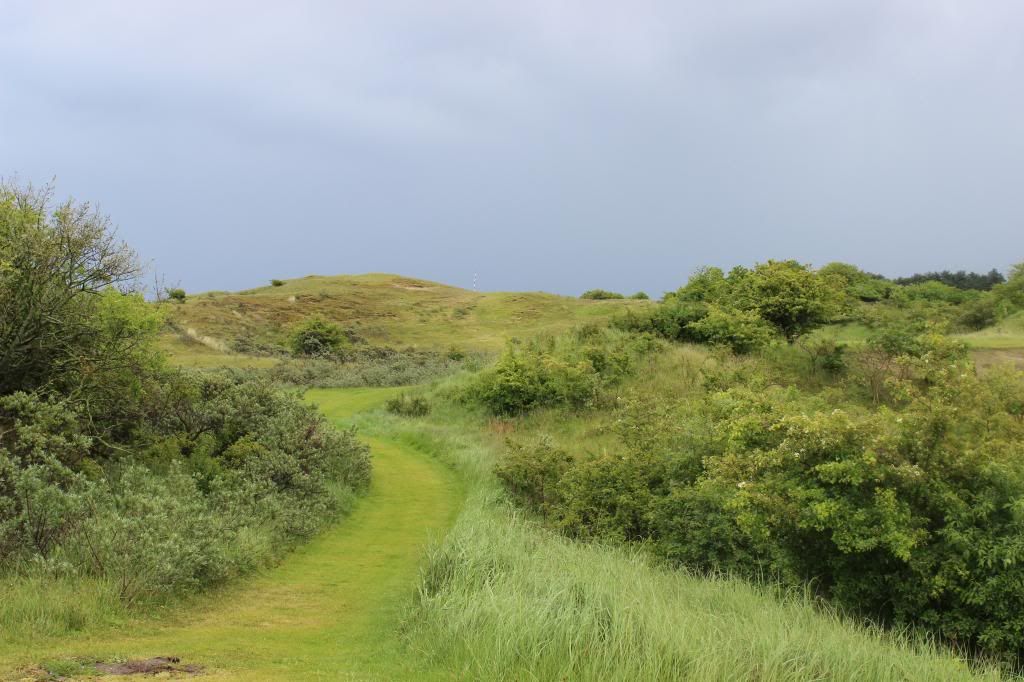
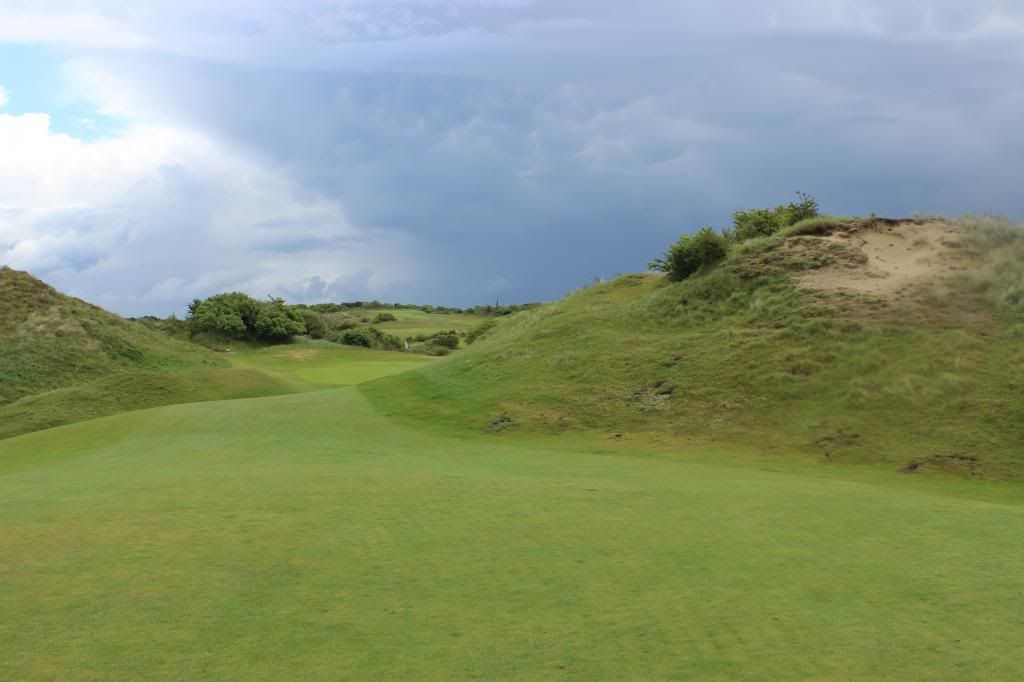
The eighth is another par three in excessive of 200 yards played downhill, but unlike the other one shorter on the front, it is all carry as a bunker guards the right side of the green and a closely-mown swale funnels shots left away from the putting surface.
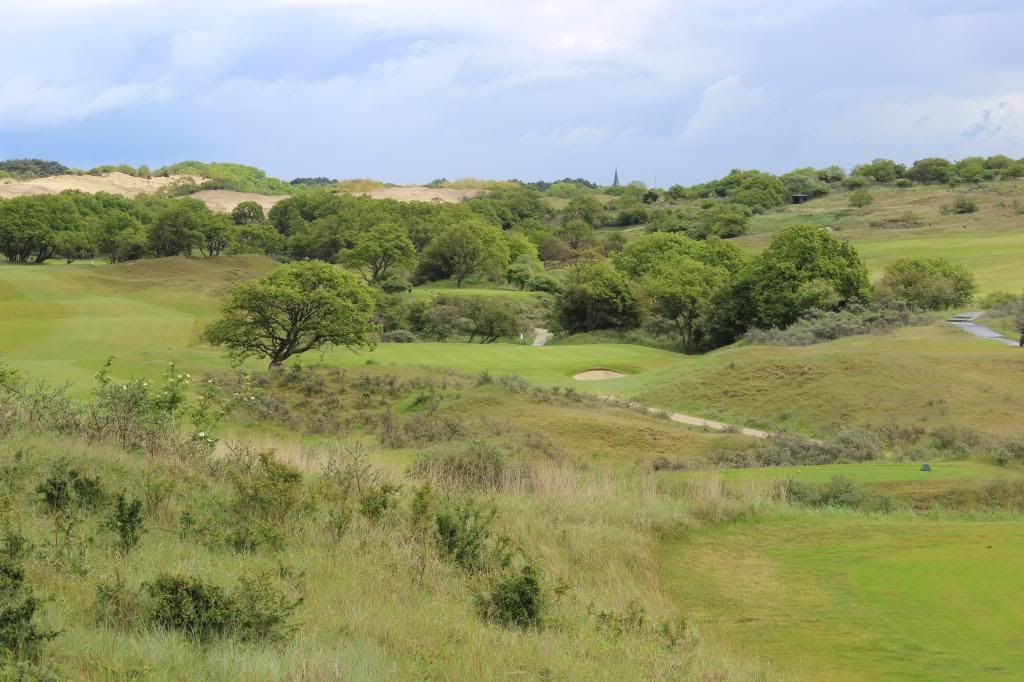
The final hole on the front nine plays into an angled, slanted and well contoured fairway, requiring drives to be hit with proper shape and trajectory to stay in the short grass. The contours of the fairway lead drives to the right, requiring an approach over a guarding bunker.


Looking back at the tee, the fairway contours are much more evident.

Back nine to follow...